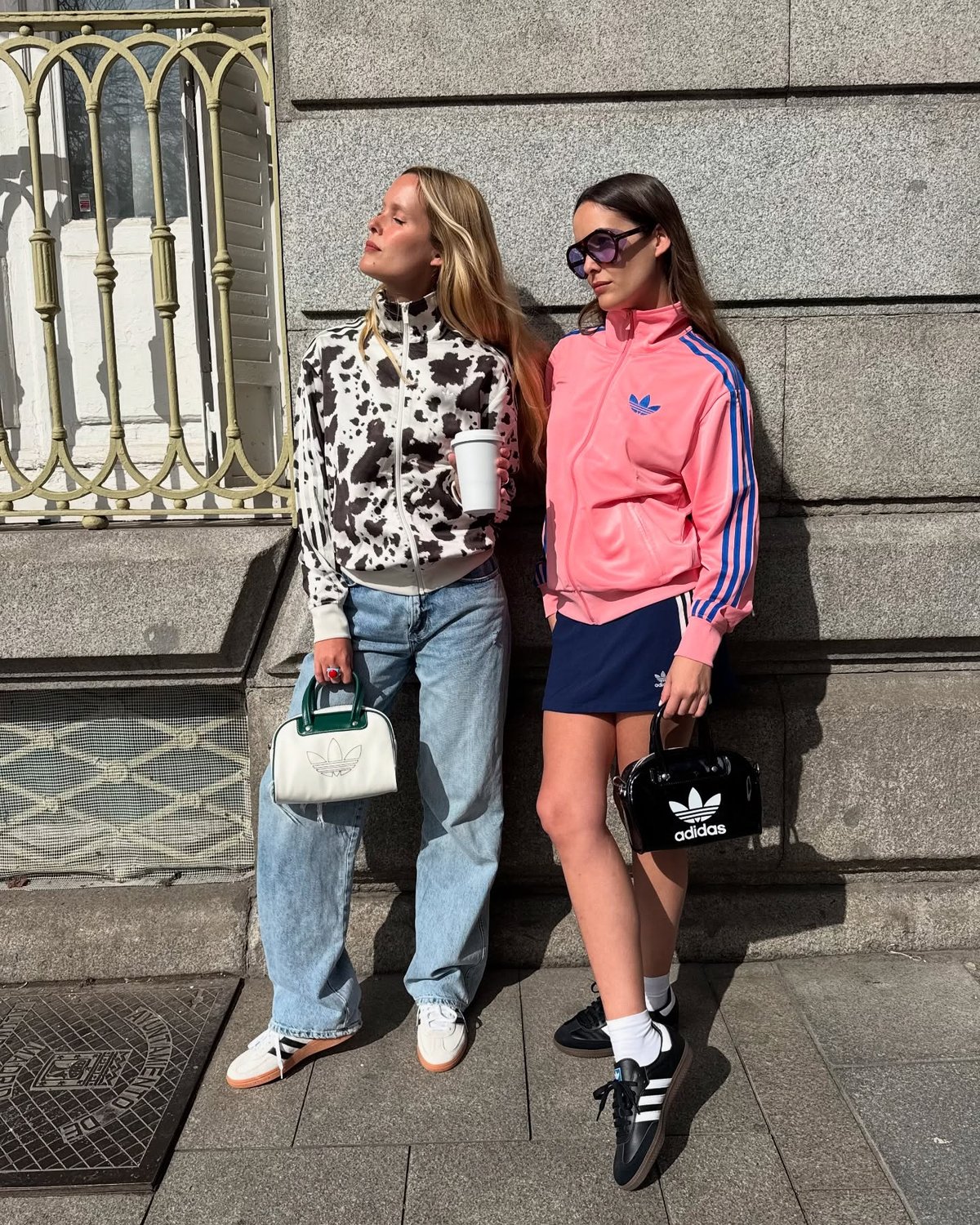The Rise of Adidas in London: A Cultural and Fashion Phenomenon
Adidas has taken over London this summer with an intensity that feels almost like the city is under a sponsorship deal. The brand’s signature three-stripe designs, such as the Firebird shorts and track jackets, have become a common sight on the streets, seemingly glued to the skin of every fourth Londoner. This trend isn’t just about fashion—it’s a cultural movement.
A Surge in Popularity
The resurgence of Adidas has been marked by a significant increase in online searches. Adidas Originals was the second-highest rising search term on ASOS last week, while Depop has seen a 153% increase in searches for “Adidas shorts” since January. Additionally, there’s been a 34% increase in the last month alone. Searches for “Adidas Firebird” have risen by 162%, and “Adidas track jacket” by 35%. These numbers help explain why it seems half of London is dressed in Adidas.
This trend isn’t confined to London. In April, Adidas reported double-digit growth across all markets and channels in the first quarter of 2025. CEO Bjørn Gulden described it as “a great quarter,” and judging by the streets of London, Q2 might be even better.
Nostalgia Meets Culture
The current Adidas boom is fueled by more than just marketing. It’s deeply rooted in nostalgia and cultural moments. The reunion of Oasis has brought back images of Liam and Noel Gallagher from the 1990s, often wearing Adidas track jackets and bottoms. Adidas capitalized on this moment by releasing an Adidas Originals x Oasis capsule collaboration in June, ahead of the reunion tour starting in Cardiff this July.
The collection is 90s-inspired, featuring the original black and white Oasis logo designed in 1993 by Brian Cannon. This logo has had a lasting impact, becoming a symbol of the era.
Icons and Influencers
Fashion trends today are heavily influenced by nostalgia, and having iconic figures associated with old trends is crucial for their revival. Robbie Williams at Glastonbury in 1995 is one such example. His image, wearing a bright red Firebird jacket, became a pivotal moment in his career. The photo was featured on the cover of his new album, “Britpop,” linking him to the Oasis crew.
Other notable figures include Kate Moss, Ewan McGregor, and David Beckham, who helped cement Adidas’ place in pop culture. Today, these associations are being reexplored, with David Beckham’s son, Cruz, spotted wearing the Oasis x Adidas collection at Glastonbury.
Football and Cultural Influence
Adidas’ connection to football dates back to 1954 when they introduced the first screw-in stud football boot during the Switzerland World Cup. This innovation revolutionized the game and solidified Adidas’ link to football culture.
Daniel-Yaw Miller, a sports and fashion journalist, notes that trends like blokecore, Britpop, Y2K, and nostalgic football-inspired fashion are now coming to the forefront, putting Adidas in a strong position. As the original football sportswear brand, Adidas is well-positioned to capitalize on these trends.
Marketing and Star Power
Adidas has invested heavily in marketing, leveraging its star power to stay relevant. The recent Superstar campaign features A-listers like Samuel L Jackson, Jennie Kim, Missy Elliot, Gabriette, and Glorilla. The black-and-white video advert, with Jackson saying, “Fashion changes, style returns,” highlights the brand’s strategic approach.
Stylist Jay Hines emphasizes the importance of working with cultural figures across various fields to maintain relevance. Collaborations with artists like Pusha T, Oasis, Beyoncé, and Pharrell have reinforced Adidas’ status as a leading brand.
London Connection
Adidas’ continued presence in London is also due to its deep connection with the city. Collaborations with designers like Grace Wales Bonner have resulted in popular shoe collections that sell out quickly. The brand’s “The London Collection” for Wimbledon 2025 and the new “London” Superstar trainer, inspired by the city’s 1970s punk scene, further highlight this bond.
Adidas has also collaborated with Transport for London, creating trainers inspired by London Tube lines. These efforts have kept the brand relevant and connected to the city’s identity.
The Future of the Trend
Despite the overwhelming presence of Adidas in London, some predict that the trend may soon shift. Morgan Allan, editor-in-chief of Twos Mag, suggests that Puma might take over as the next big trend. Puma has followed a similar model, dipping into its archive and offering runners to cool kids in the city.
However, Adidas is prepared. With a history of strategic positioning and a wealth of alternative shoe lines, the brand is ready to adapt and remain relevant. The key will be avoiding the pitfalls that led to the Samba’s decline, such as oversaturation and unwanted associations.
In conclusion, the Adidas phenomenon in London is a blend of nostalgia, cultural influence, and strategic marketing. As the summer continues, it remains to be seen how long this trend will last—but with Adidas’ rich history and forward-thinking approach, the brand is well-equipped to navigate the ever-changing fashion landscape.







